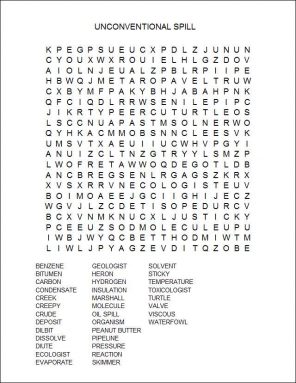Unconventional spill
An accidental spill of extra-heavy crude oil points to some unusual challenges in safely getting this petroleum to market
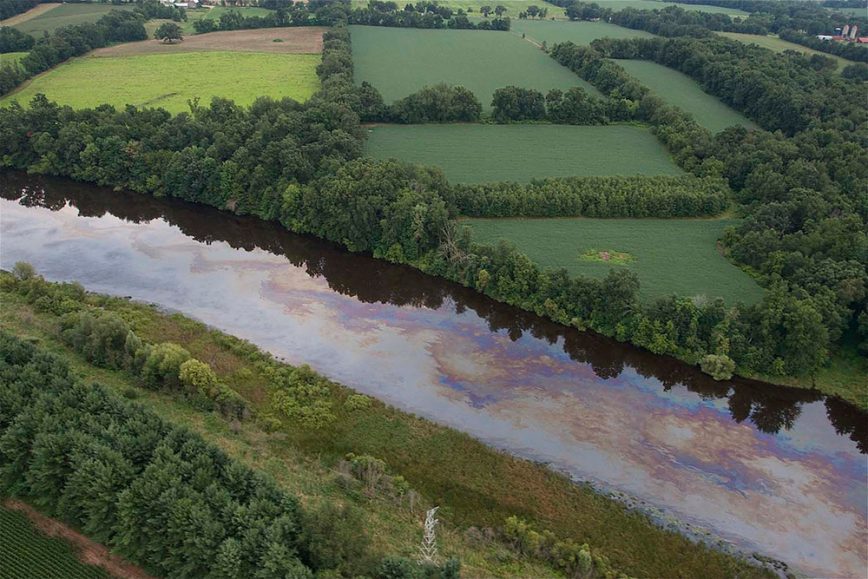
The Kalamazoo River, shortly after an oil pipeline burst on July 25, 2010, spilling an estimated 3.2 million liters (843,000 gallons) of diluted bitumen into the water.
Environmental Protection Agency
On July 26, 2010, people living along Talmadge Creek in Marshall, Mich., awoke to a sharp, sickening smell. Those who followed their noses to the creek witnessed an environmental horror.
The water flowed black and shiny. It coated turtles and waterfowl with a smelly goo. It transformed grasses and bushes along the banks from green to oily black.
Eyes watered and throats burned as people breathed in the fumes. Some developed headaches and felt sick to their stomachs.
“It was like something from a science fiction movie. It was creepy,” recalls Paul Makoski.
Makoski is director of environmental health with Michigan’s Calhoun County Public Health Department, in Battle Creek. He was one of the first people to check out the creek that day. As he and others would soon learn, oil had been spilling from a rupture in a nearby oil pipeline since the night before.
A part of Enbridge Inc., a Canadian company based in Calgary, Alberta, owns the pipeline. And it hadn’t realized right away that there was a problem. By the time engineers closed the pipeline valves to end the spill, an estimated 3.2 million liters (843,000 gallons) had leaked into Talmadge Creek.
The oil flowed into the nearby Kalamazoo River. From there it moved onward toward Lake Michigan, one of North America’s Great Lakes. While the oil didn’t make it as far as that lake, the spill did contaminate nearly 65 kilometers (40 miles) of waterways.
And as workers cleaning up the mess later discovered, this was no ordinary oil. This was diluted bitumen.
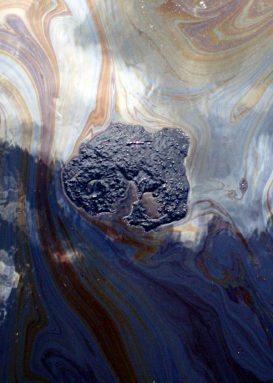
“It’s a new kind of oil that we don’t have much experience with,” says Stephen Hamilton. An aquatic ecologist at Michigan State University, in East Lansing, he helped advise Enbridge and the U.S. Environmental Protection Agency about the cleanup. The chemicals that make up bitumen are different from those in ordinary crude oil, explains Hamilton, so “it behaves differently.”
Since the Marshall accident, scientists have been studying the spilled bitumen’s effects on people who were exposed to its fumes and to portions of the environment touched by the oil. They’ve learned some important lessons. Among them: Bitumen can sink in water, making it especially hard to clean up.
Yet there is plenty that the experts still don’t know. And that worries Makoski and other researchers who work to protect people and the environment.
Like ‘peanut butter’
Pipelines carrying oil and natural gas crisscross North America. With Alberta’s bitumen production expected to more than double in the next 10 years, more pipelines will be carrying this unusual oil than ever before.
The good news: A June 2013 report concluded that diluted bitumen isn’t any more likely than other types of oil to trigger bursts in pipelines. This report was issued by the U.S. National Research Council in Washington, D.C. The group provides independent advice about science, engineering and medicine to government agencies and other organizations.
But pipeline and other spills do occur. And when the spills involve diluted bitumen, they can pose a more serious problem, some scientists argue.
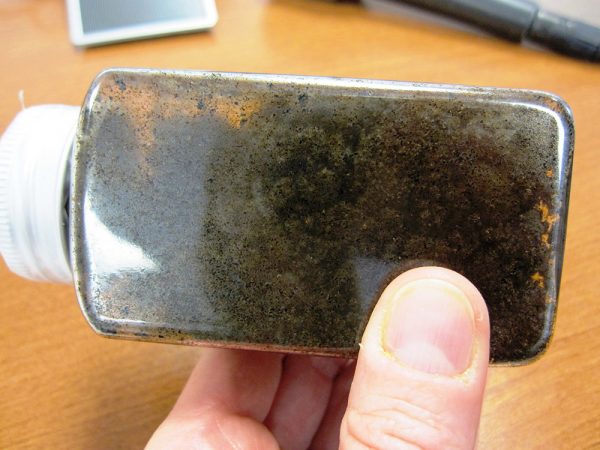
Northern Alberta boasts the world’s largest known bitumen deposits. It was the source of the oil that spilled in Marshall.
As it comes out of the ground, bitumen is extremely viscous, which means it’s thick and sticky. The reason has to do with heat and hungry bacteria.
All oil consists of a complex mix of molecules containing carbon and hydrogen (units known as hydrocarbons), explains Merv Fingas in Edmonton, Alberta. Now retired, this oil spill expert used to work for Environment Canada, a federal agency. In bitumen, those molecules are bigger than they are in the so-called conventional oil from which refiners make most of the gasoline that powers cars and the heating oil that warms many homes.
Both bitumen and conventional oil began their lives as microscopic plants and animals. They lived in Earth’s seas millions of years ago. As the organisms died, they drifted to the bottom. Over the eons, those remains became buried beneath layers of other decaying plants and animals — and by sand and clay.
Over many millions of years, pressure from all those layers built up. That caused the plant and animal remains to heat and break down — or decay. Eventually, chemical reactions in this hot stew cooked up what geologists refer to as crude oil and natural gas.
But in the case of bitumen, temperatures never got high enough to kill the bacteria that eat hydrocarbons.
So the bacteria feasted. But they are picky eaters. They ate only small molecules, leaving behind the big ones that make bitumen so viscous.
Making bitumen flow
Bitumen’s viscosity and the fact it is mixed with so much sand and clay make it difficult — and therefore expensive — to get out of the ground. So until recently, energy companies focused on extracting conventional oil. They ignored bitumen.
But no longer. Much of the oil that was easy and inexpensive both to extract and to process has been used. Meanwhile, demand for oil-based products continues to grow. These trends have prompted oil companies to begin extracting bitumen.
In some places, bitumen can be mined. But in Alberta, most of that super-heavy oil is too deep to scoop out with backhoes. So engineers inject steam into the ground. This heating reduces the bitumen’s viscosity. Now a fluid, they can pump it out.
Once the bitumen reaches the surface and cools, however, it becomes thick and tarry again. Before engineers can make it flow through pipelines, they must dilute it with solvents. These lighter-weight hydrocarbons dissolve into and mix with the bitumen. In the process, they make the oil runnier, much as adding water will thin pancake batter, making it easier to stir and to pour onto a griddle.
Engineers refer to this less viscous mix of diluted bitumen as dilbit, for short.
Sometimes the added solvent is a complex substance known as gas condensate. Gas condensate remains a liquid as long as the oil it accompanies flows through a pipeline.
But as scientists in Marshall learned, the solvent evaporates, or changes from a liquid to a gas, once bitumen leaks from a pipeline.
That solvent can contain benzene, a gas that can cause cancer. After the Marshall spill, benzene hovered over Talmadge Creek and the Kalamazoo River for a few days before drifting away.
The spill’s damage

“Our crews wanted to get out on the water but had to be pulled back,” he says. “It took three or four days before we could get on the river because of high levels of benzene in the air.”
When Wesley and his team finally did make it onto the river, they found turtles, geese, ducks, herons and muskrats coated in oil.
Each time the creatures tried to clean themselves with beaks and tongues, they swallowed some of the oil, which made them sick. Wherever oil matted an animal’s feathers or fur, it eliminated the animal’s natural insulation. Affected animals risked being unable to maintain a healthy body temperature.
Wesley and other wildlife workers attempted to rescue as many spill victims as they could. They scooped up 3,000 oiled turtles, 176 waterfowl and 18 muskrats.
At a special treatment center, volunteers from the community worked on gently and patiently cleaning the animals with rags and cotton swabs. In the end, 80 percent of the birds and 90 percent of the turtles survived. None of the muskrats made it, possibly because their fur soaked up more oil.
There were no reports of fish dying at this spill site. Wesley suspects they swam out of harm’s way. There’s no way to know, however, if any of them had been sickened.
Signs of recovery
By 2013, the spill area again sheltered normal numbers of fish, water insects, turtles, waterfowl and other animals. “It amazes me,” Wesley says. “The river was totally devastated in the months after the spill.” This recovery, he says, “shows the system can heal.”
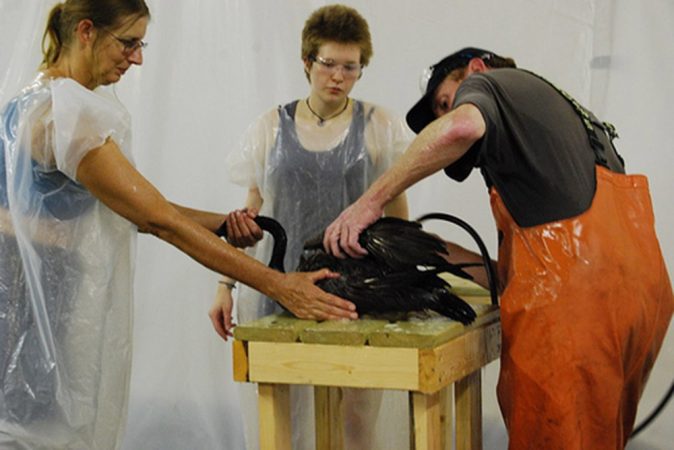
The Michigan Department of Environmental Quality has also sampled soil and groundwater for nickel, beryllium and other heavy metals.
All oil contains heavy metals, which at high levels can poison people and animals. Which metals and how much an oil contains will depend on where it was extracted. The bitumen that spilled in Michigan contained more heavy metals than conventional oil, notes Fingas, the retired oil-spill expert.
While the Michigan Department of Environmental Quality’s scientists haven’t found cause for concern, they won’t have complete results until 2014.
Still, some biologists are worried about the 680,000 liters (180,000 gallons) of bitumen that remain in the creek and river.
Conventional oil usually floats, making it possible to scoop much of it up with giant spongelike booms and skimmers. But once the dilbit solvent evaporated, the tarry oil sank to the river bottom. Scientists now suspect bitumen molecules grabbed onto sand and soil suspended in the water. This made the mix even heavier.

On Sept. 4, the U.S. EPA issued a report offering some details on the cleanup of this spill and its cost so far: $50 million.
Some concerns persist
These cleanup efforts may have caused additional damage, scientists now worry. Cleanup crews disturbed the river bottom, where fish spawn. Workers also cut down oil-soaked vegetation along stream banks — home to waterfowl and other animals.
“Obviously you can’t put a vacuum cleaner in the river for 40 miles without doing damage,” says Ralph Dollhopf. An environmental engineer with the Environmental Protection Agency, in Traverse City, Mich., he managed spill-cleanup efforts on behalf of the agency. “What’s worse,” he asks — having some leftover oil in the river, “or damaging [the river] trying to take it out?”
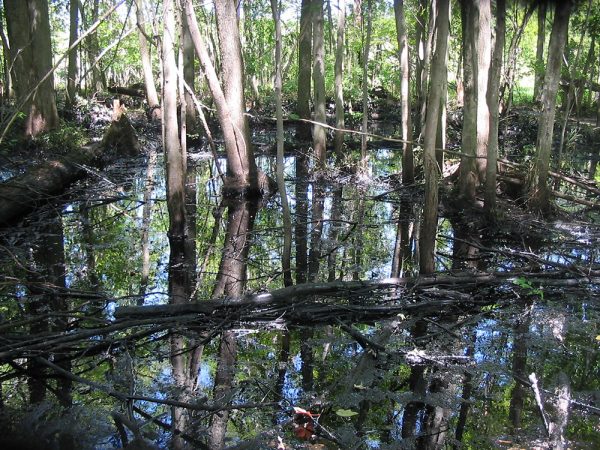
The Exxon Valdez accident involved conventional oil. No one is sure how a spill of bitumen will affect the long-term health of wildlife and humans.
“Nobody has actually tested this stuff,” points out Peter Hodson of Queen’s University in Ontario. “There is just no data on biological testing of bitumen with fish or any other species,” he observes.
A fish toxicologist, Hodson worries the leftover bitumen could harm the ability of fish and other wildlife to reproduce. Toxicologists study the ability of substances to harm people or other living things.
“The upshot of this is that it shouldn’t have happened in the first place,” Hodson says. “We need to set up a system so we don’t have leaks.”
Leaks do continue to occur. At a tar sands drilling site in northern Alberta, four bitumen leaks have spilled the equivalent of roughly 1.27 million liters (337,000 gallons) of oil from May to mid-August, government officials said. That number will climb even higher. At the time this story was posted, oil was still seeping into the ground at the site, operated by Canadian Natural Resources Ltd. The leaked oil has killed birds, small mammals and amphibians.
“But the real problem is our energy use,” Hodson says. “We consume so much oil.” And as long as people use oil, he notes, there will be oil pollution.
This story was made possible in part by a fellowship from the Institutes for Journalism & Natural Resources.
Power Words
condense To change from gas to a liquid.
crude oil Petroleum oil as it comes from reservoirs in the ground. Crude oil must undergo further refining to yield gasoline, diesel and other petroleum products, as well as plastic.
bitumen oil A natural type of especially heavy, dense petroleum. This type of heavy crude must be diluted before it can flow through pipelines.
dilute To make something thinner or less concentrated by adding a liquid to it.
hydrocarbons A group of many compounds made by linking together different numbers of hydrogen and carbon atoms. Examples include methane, propane and ethylene.
molecule A combination of two or more chemically bound atoms. A molecule forms the smallest unit of any chemical. For instance, two hydrogen atoms bound to a single oxygen atom form a molecule of water.
viscous The property of being thick, sticky and hard to pour.
Word Find
(click here to enlarge puzzle for printing)
